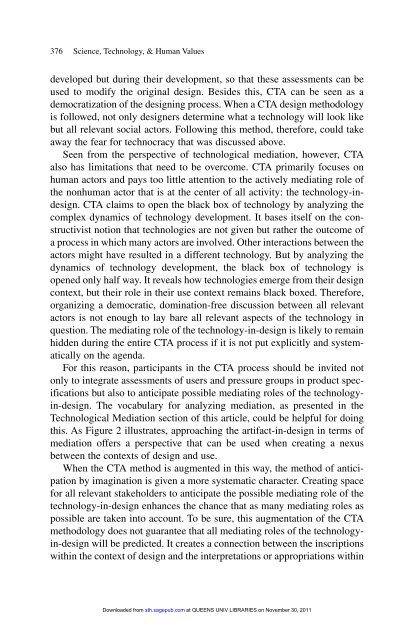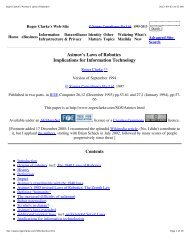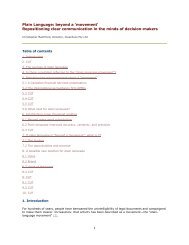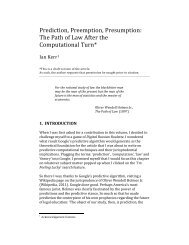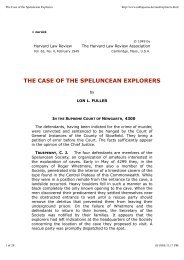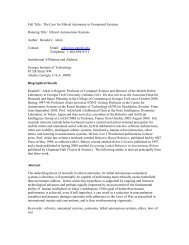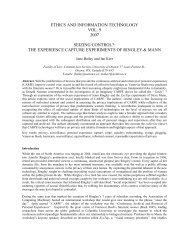Materializing Morality: Design Ethics and Technological Mediation.
Materializing Morality: Design Ethics and Technological Mediation.
Materializing Morality: Design Ethics and Technological Mediation.
You also want an ePaper? Increase the reach of your titles
YUMPU automatically turns print PDFs into web optimized ePapers that Google loves.
376 Science, Technology, & Human Values<br />
developed but during their development, so that these assessments can be<br />
used to modify the original design. Besides this, CTA can be seen as a<br />
democratization of the designing process. When a CTA design methodology<br />
is followed, not only designers determine what a technology will look like<br />
but all relevant social actors. Following this method, therefore, could take<br />
away the fear for technocracy that was discussed above.<br />
Seen from the perspective of technological mediation, however, CTA<br />
also has limitations that need to be overcome. CTA primarily focuses on<br />
human actors <strong>and</strong> pays too little attention to the actively mediating role of<br />
the nonhuman actor that is at the center of all activity: the technology-indesign.<br />
CTA claims to open the black box of technology by analyzing the<br />
complex dynamics of technology development. It bases itself on the constructivist<br />
notion that technologies are not given but rather the outcome of<br />
a process in which many actors are involved. Other interactions between the<br />
actors might have resulted in a different technology. But by analyzing the<br />
dynamics of technology development, the black box of technology is<br />
opened only half way. It reveals how technologies emerge from their design<br />
context, but their role in their use context remains black boxed. Therefore,<br />
organizing a democratic, domination-free discussion between all relevant<br />
actors is not enough to lay bare all relevant aspects of the technology in<br />
question. The mediating role of the technology-in-design is likely to remain<br />
hidden during the entire CTA process if it is not put explicitly <strong>and</strong> systematically<br />
on the agenda.<br />
For this reason, participants in the CTA process should be invited not<br />
only to integrate assessments of users <strong>and</strong> pressure groups in product specifications<br />
but also to anticipate possible mediating roles of the technologyin-design.<br />
The vocabulary for analyzing mediation, as presented in the<br />
<strong>Technological</strong> <strong>Mediation</strong> section of this article, could be helpful for doing<br />
this. As Figure 2 illustrates, approaching the artifact-in-design in terms of<br />
mediation offers a perspective that can be used when creating a nexus<br />
between the contexts of design <strong>and</strong> use.<br />
When the CTA method is augmented in this way, the method of anticipation<br />
by imagination is given a more systematic character. Creating space<br />
for all relevant stakeholders to anticipate the possible mediating role of the<br />
technology-in-design enhances the chance that as many mediating roles as<br />
possible are taken into account. To be sure, this augmentation of the CTA<br />
methodology does not guarantee that all mediating roles of the technologyin-design<br />
will be predicted. It creates a connection between the inscriptions<br />
within the context of design <strong>and</strong> the interpretations or appropriations within<br />
Downloaded from sth.sagepub.com at QUEENS UNIV LIBRARIES on November 30, 2011


